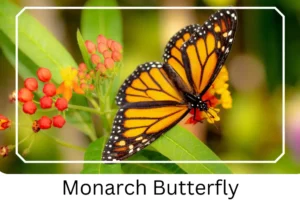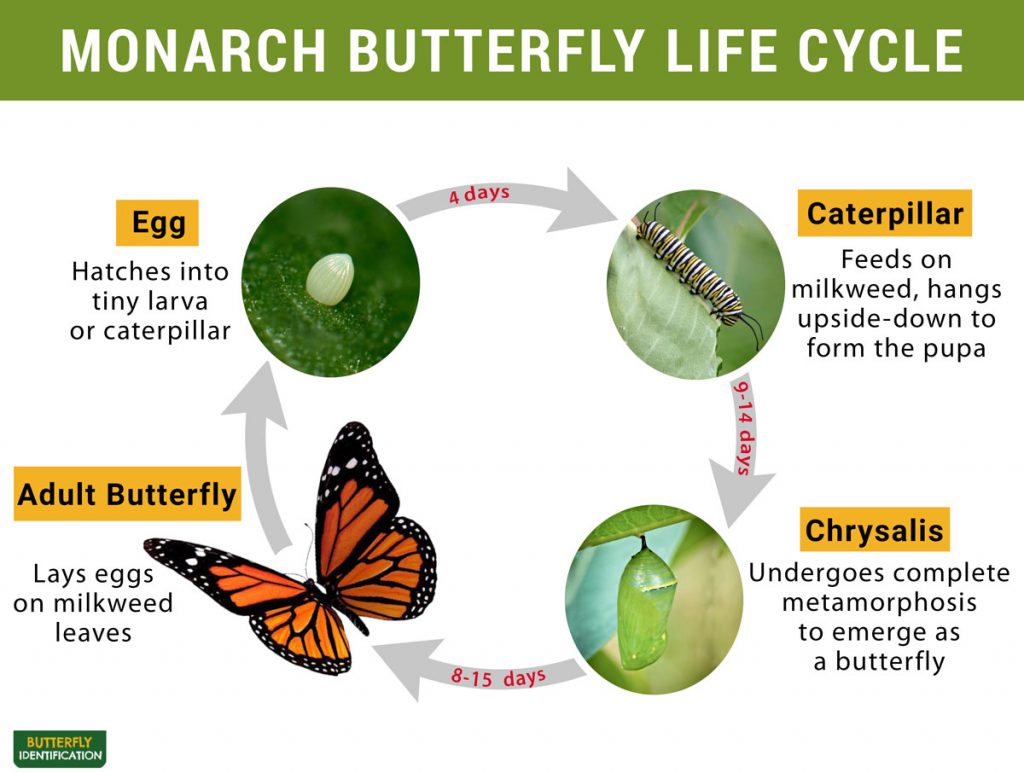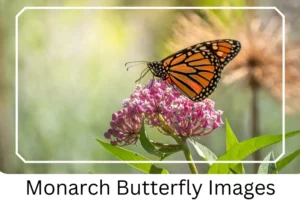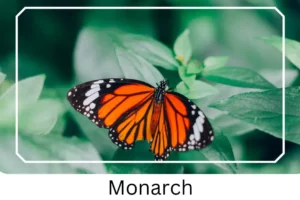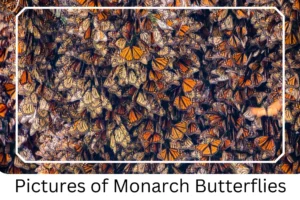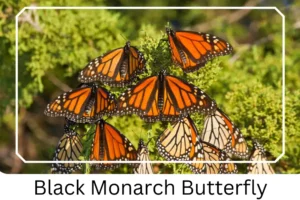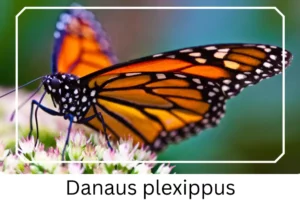Monarch (Danaus plexippus)
The Monarch butterfly, belonging to the Nymphalidae family, is not just a common sight across North America but also an iconic symbol of nature’s intricacy and beauty. Famed for its vibrant colors and remarkable migration patterns, the Monarch butterfly’s lifecycle from a tiny egg to a striking adult is a fascinating journey that captivates the interest of both scientists and nature enthusiasts alike.
Scientific Classification
- Family: Nymphalidae
- Genus: Danaus
- Scientific Name: Danaus plexippus
Overview
Monarch butterflies, recognized for their striking orange and black wings, are a widespread species in North America. Their unique lifecycle, involving dramatic transformations and long-distance migrations, serves as a compelling study of adaptation and survival in the natural world. This overview aims to provide a comprehensive understanding of the Monarch butterfly, including its identification, lifecycle, and the significant role it plays in ecosystems and cultures.
Description and Identification
Caterpillar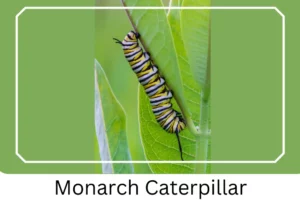
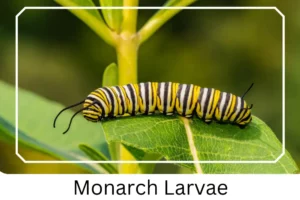
The life of a Monarch begins as a caterpillar, hatching from an egg laid on a milkweed plant. Initially, these caterpillars are pale green, evolving into a striking pattern of white, yellow, and black bands. This coloration serves as a warning to predators about their toxicity, acquired from the milkweed they consume.
Pupa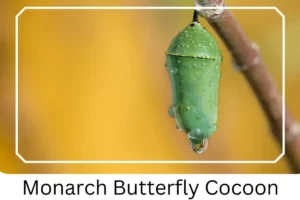
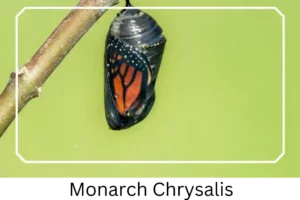
As the caterpillar matures, it forms a chrysalis, a stage marked by a pale green casing adorned with golden dots. This phase is crucial for the transformation into the adult butterfly, with the chrysalis gradually changing color to signal the impending emergence of the adult butterfly.
Adult Butterfly
Sexual Dimorphism: Monarch butterflies exhibit sexual dimorphism, with males and females displaying distinct physical differences. Males are typically larger and have narrower, lighter veins on their wings compared to females.
Color and Appearance: The adult Monarch’s wings are a brilliant orange with black margins and veins, and white spots lining the edges. The underside of the wings mirrors this pattern but with a more subdued coloration. A unique variant, the white Monarch, predominantly found in Hawaii, displays a recessive gene resulting in white instead of orange wings.
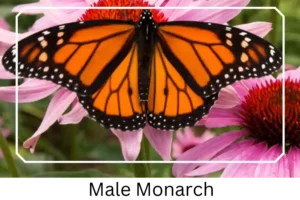
 Average Wingspan: The wingspan of an adult Monarch ranges from 8.9 to 10.2 cm (3½ to 4 inches), allowing for their characteristic steady and gliding flight.
Average Wingspan: The wingspan of an adult Monarch ranges from 8.9 to 10.2 cm (3½ to 4 inches), allowing for their characteristic steady and gliding flight.
Flight Pattern: Monarchs are known for their smooth sailing flight pattern, cruising at speeds of about 9 km per hour (5.5 mph), similar to a human’s jogging pace.
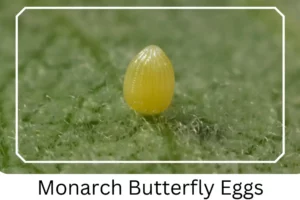
Monarch Butterfly Eggs
Eggs
The beginning of the Monarch’s lifecycle is marked by the laying of eggs, predominantly on milkweed plants. These tiny, pencil-tip-sized eggs are yellow or off-white, with a unique longitudinal ridge running from top to bottom.
Quick Facts | |
| Other Names | Common tiger, milkweed, black veined brown, and wanderer. |
| Distribution | Extends from southern Canada through to northern parts of South America, and includes locations like North Africa, the Philippines, Gibraltar, Caribbean Islands, and more. |
| Habitat | Prefers meadows and open fields during spring and summer; migrates to higher altitudes in winter. |
| Predators | Includes wasps, ants, and spiders. |
| Lifespan of Adults | Ranges from approximately two to six weeks. |
| Host Plants | Prefers milkweed varieties along with other nectar-rich plants. |
| Adult Diet | Mainly nectar from plants like milkweed. |
How to Identify Monarch Butterfly?
Identifying a Monarch butterfly can be an enriching experience, combining observation with an appreciation for nature’s details. Look for the vibrant orange and black patterned wings that set them apart from other butterflies. The presence of white spots along the wing edges and the distinctive black veins are key identifiers. Males can be distinguished by their larger size and thinner wing veins, whereas females have thicker veins. Observing the flight pattern can also aid identification; Monarchs have a unique, gliding flight that is both graceful and deliberate. The milkweed plant, essential for their survival, is often a good place to start looking for these remarkable insects.
Did You Know?
- The Monarch was first described by Carl Linnaeus in 1758 in his seminal work, Systema Naturae.
- The species was named to honor England’s King William III, the Prince of Orange, aligning with the butterfly’s vivid orange wings.
- The three species of the monarch include D. plexippus, D.erippus (southern monarch), and D.cleophile (Jamaican monarch).
- The Monarch butterfly plays a symbolic role in Mexico’s Día de Muertos, believed to represent the spirits of the deceased.
- This species is unique for its two-way migration pattern, similar to birds, capable of traveling up to 100 miles a day.
- A significant decline in their population has been observed, highlighting the importance of conservation efforts to protect their habitat and food sources.
- The Canadian documentary film released in 2012, Flight of the Butterflies projects the migration and life cycle of the monarch butterflies.
- Besides the milkweed, other flowers that attract the monarch butterfly include Mexican sunflowers, zinnia, and bottlebrush.
- These butterflies store a toxic substance, namely the Cardiac Glycosides which they ingest from the milkweed, thus being poisonous to their predators though not humans.
- Their migration is two-way just like birds, not seen in any other butterfly species. The monarch can travel 50 to 100 miles in a day, with the highest record being 265 miles in one day.
- The “Monarch Butterfly Biosphere Reserve,” in Mexico, located along the State of Mexico and Michoacan border was built for conserving these species. El Rosario is the largest and most popular sanctuary of this reserve.
Conclusion
The Monarch butterfly, with its striking appearance and remarkable lifecycle, is more than just a beautiful sight. It is a symbol of resilience, migration, and the interconnectedness of ecosystems. Understanding and appreciating the Monarch’s journey from caterpillar to majestic flyer enriches our connection to the natural world, emphasizing the importance of conservation and the role each species plays in maintaining biodiversity.
Monarch Butterfly Pictures

Scientific Classification

- Family: Nymphalidae
- Genus: Danaus
- Scientific Name: Danaus plexippus

